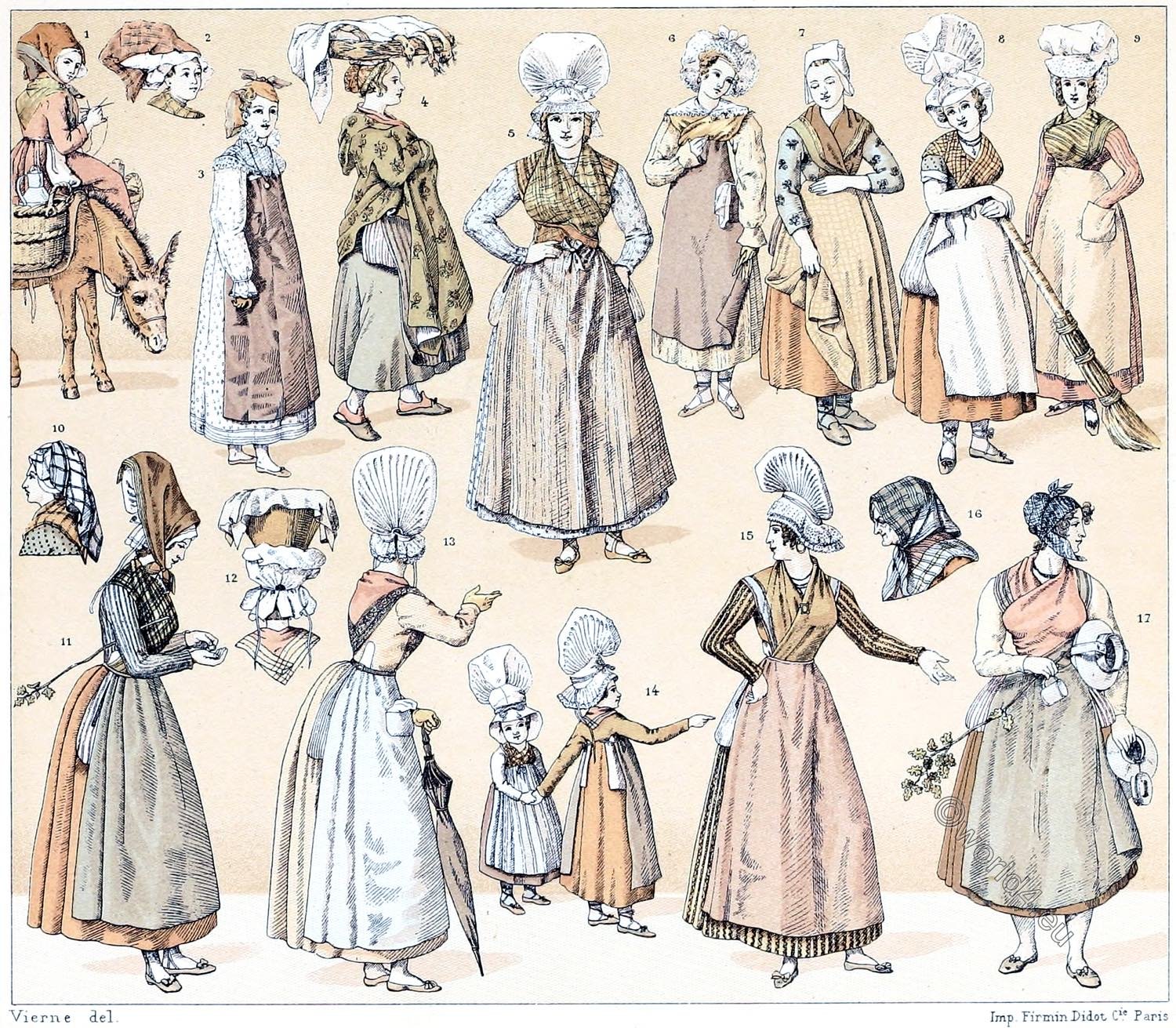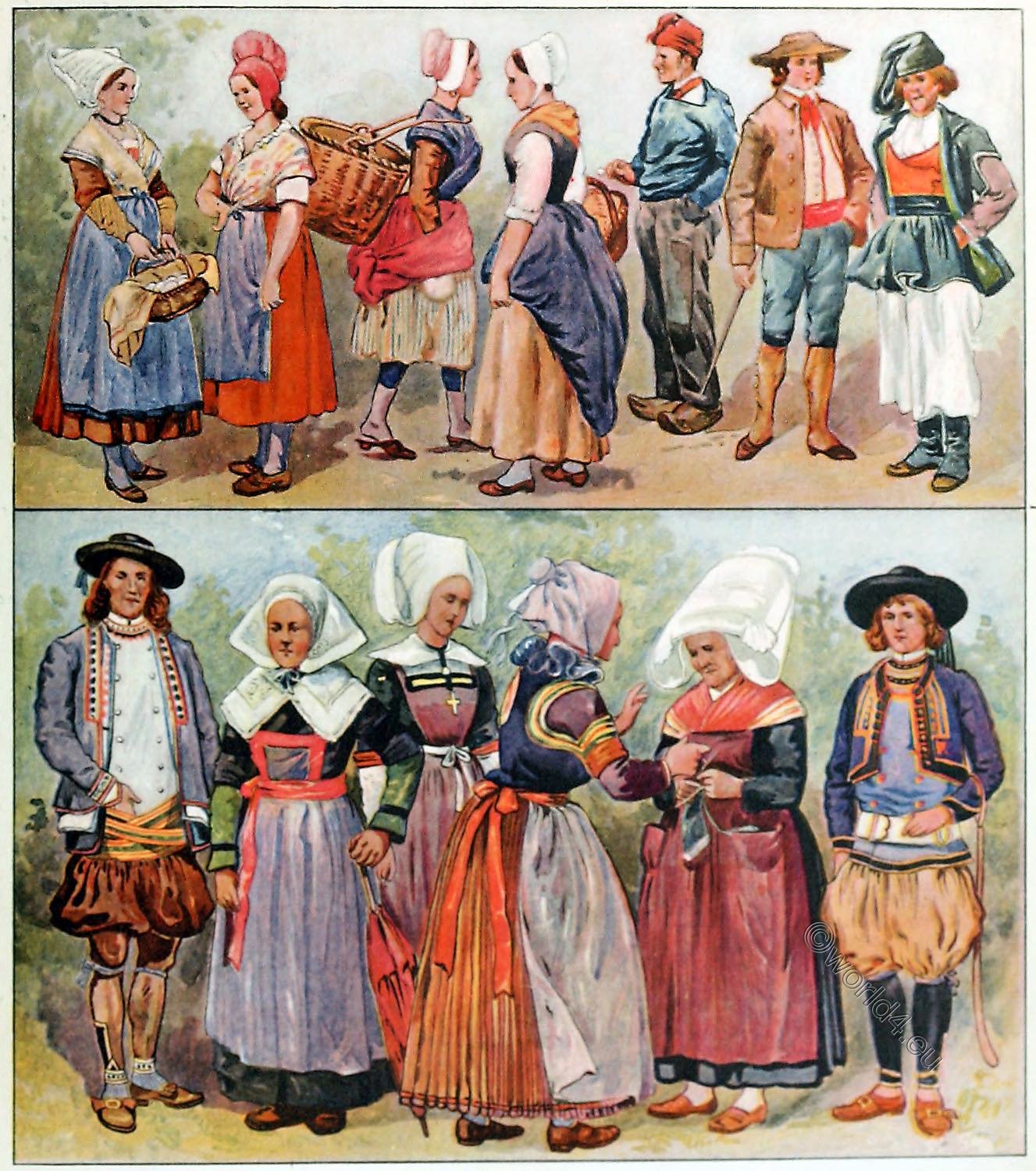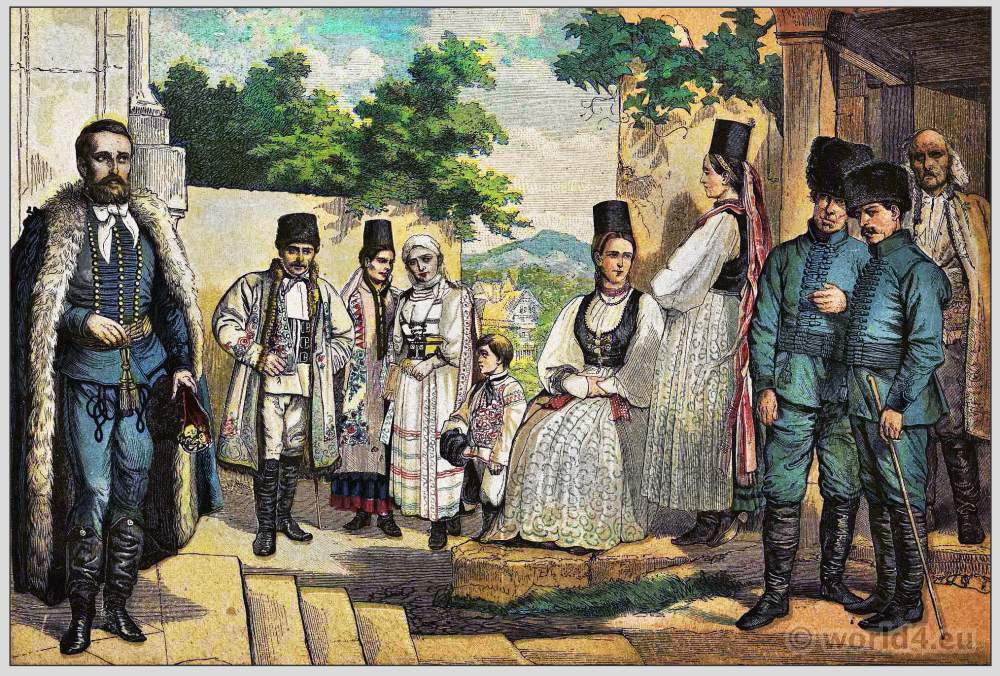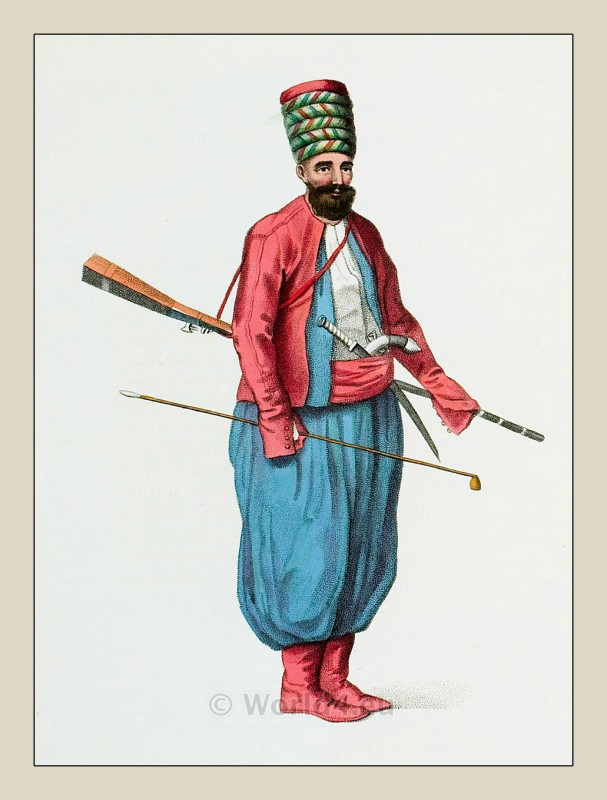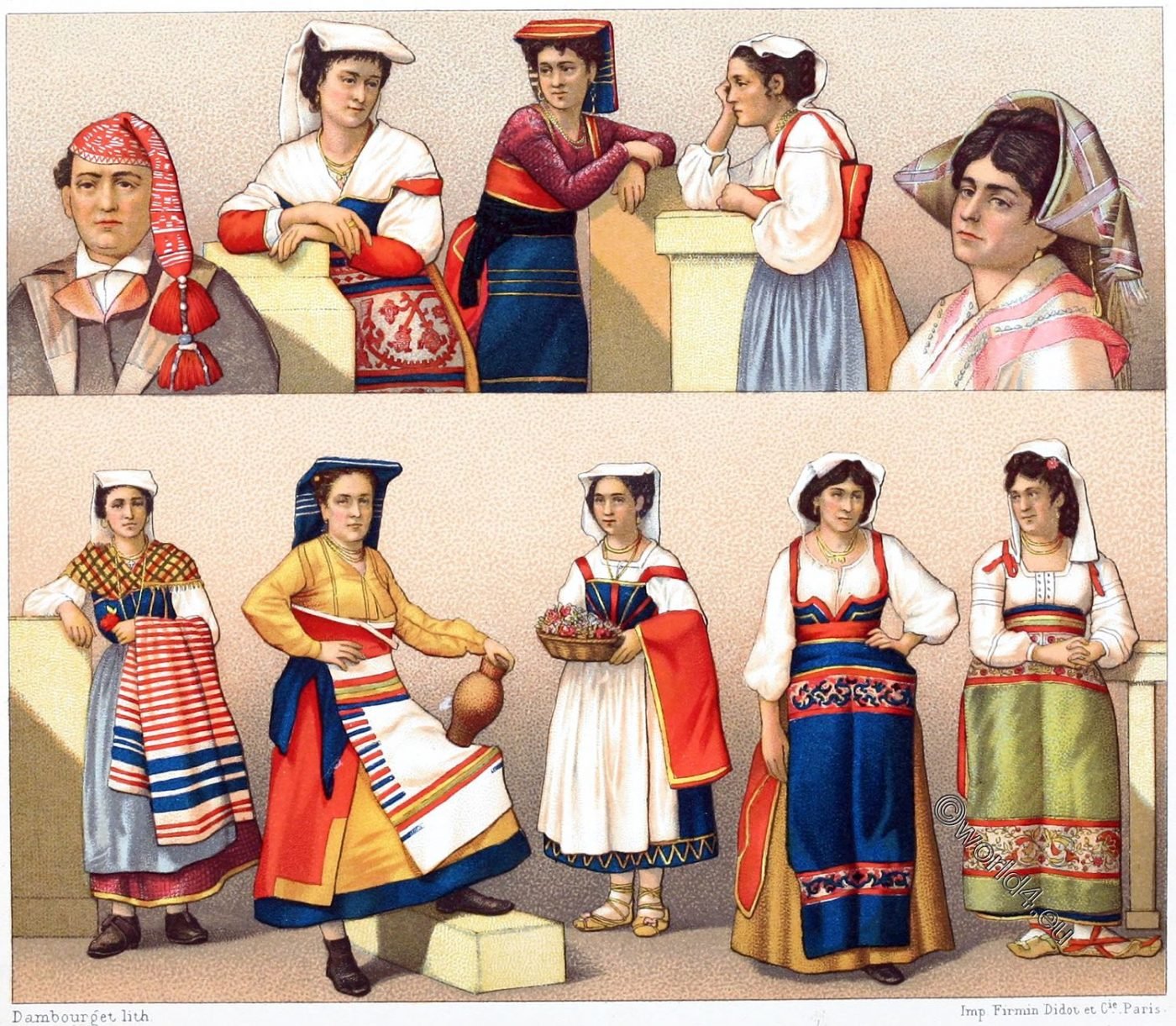
1 2 3 4 5
6 7 8 9 10
ITALY. 19TH CENTURY
FOLK COSTUMES IN THE PROVINCES OF ROME AND ANCONA.
PROVINCE ROME.
No. 2. Women of Ostia.
No. 3 and 7. – Women of Sonnino.
No 4 and 6. – Women of Cervara.
NI’. 8 and 10. – Ciocciaren. (Mountain dwellers).
No. 9. Wife of Agnani.
PROVINCE ANCONA.
Nos 1 and 5 – Inhabitants of Loreto 1) (Marche).
In the surroundings of Rome the picturesque costume of the contadini (farmers) has almost disappeared.
Only occasionally do you see entire families of country dwellers in national costumes on the streets.
The headscarf of canvas or other fabric is worn in the manner of the sibylls and vestals of antiquity (nos. 9 and 10), as a strip covering the upper part of the head and falling down behind. The latter type is that of the women of Cervara di Roma (nos. 4 and 6); the women of Ostia (nos. 2) take up the end again and put it under their hair; the women of Sonnino 2) (nos. 3 and 7) stretch a piece of embroidered fabric over a plate covering the head; also the women of Nettuno (Latium). Both types of arrangement are found in the Ciocciaren (nos. 8 and 10), a name taken from the cioccia, the shoe made of sheep, goat or cattle fur worn by the mountain dwellers.
The women from Trastevere 3) wear their heads uncovered, and in the church they arrange their scarves like a veil. Even the poorest women have a penchant for jewellery. The ancient needle and the long earring, called navicella, were taken from antiquity.
The bodice usually consists of an upper part that goes under the arms, is laced at the back and held by narrow armpit bands. The wide puff sleeves of the cut out shirt sometimes cover adjacent over sleeves (No. 2). In Ciocciare (no. 10), the shirt itself forms the bodice, while the farmer’s wife of Cervara (no. 6) wears her own under a chest cloth laid crosswise in white, and the women of Sonnino (no. 3 and 7) let it disappear completely under a silk jacket. Above the plain skirt there is almost always a richly and colourfully embroidered apron.
No. 1 and 5 represent inhabitants of the city of Loreto. The woman’s black hair is covered by a headscarf folded several times; the man wears a red wool cap similar to the Castilian qorro.
No. 2, 3, 4, 6, 7, 8, 9 and 10 according to photographs.
See Francis Wey, Rome. – Du Bois-Melly, Voyages d’artistes en Italie, 1877.
1) Loreto is an Italian municipality in the Marches, about 20 km southeast of Ancona in the foothills of the Gran Sasso mountains. After Saint Peter’s Basilica in Rome, Loreto is the second most important place of pilgrimage in Italy and one of the most important in the Catholic world. The place became the eponym of numerous ecclesiastical buildings, also geographical conditions. Among the artistic treasures of the basilica are a Black Madonna and important works by Melozzo da Forlì, Andrea Sansovino and Luca Signorelli.
2) Sonnino is an Italian city located in the Monti Ausoni north of Terracina in the province of Latina in the Lazio region. It is located 99 kilometers southeast of Rome.
3) Trastevere (from Latin trans Tiberim “beyond the Tiber”) is the XIIIth Rione (district) of Rome. It stretches from the southern Tiber knee to the hill Gianicolo on the right, western bank of the Tiber and is considered the most original and authentic quarter of the city.
Source: History of the costume in chronological development by Auguste Racinet. Edited by Adolf Rosenberg. Berlin 1888.
Related
Discover more from World4 Costume Culture History
Subscribe to get the latest posts sent to your email.


